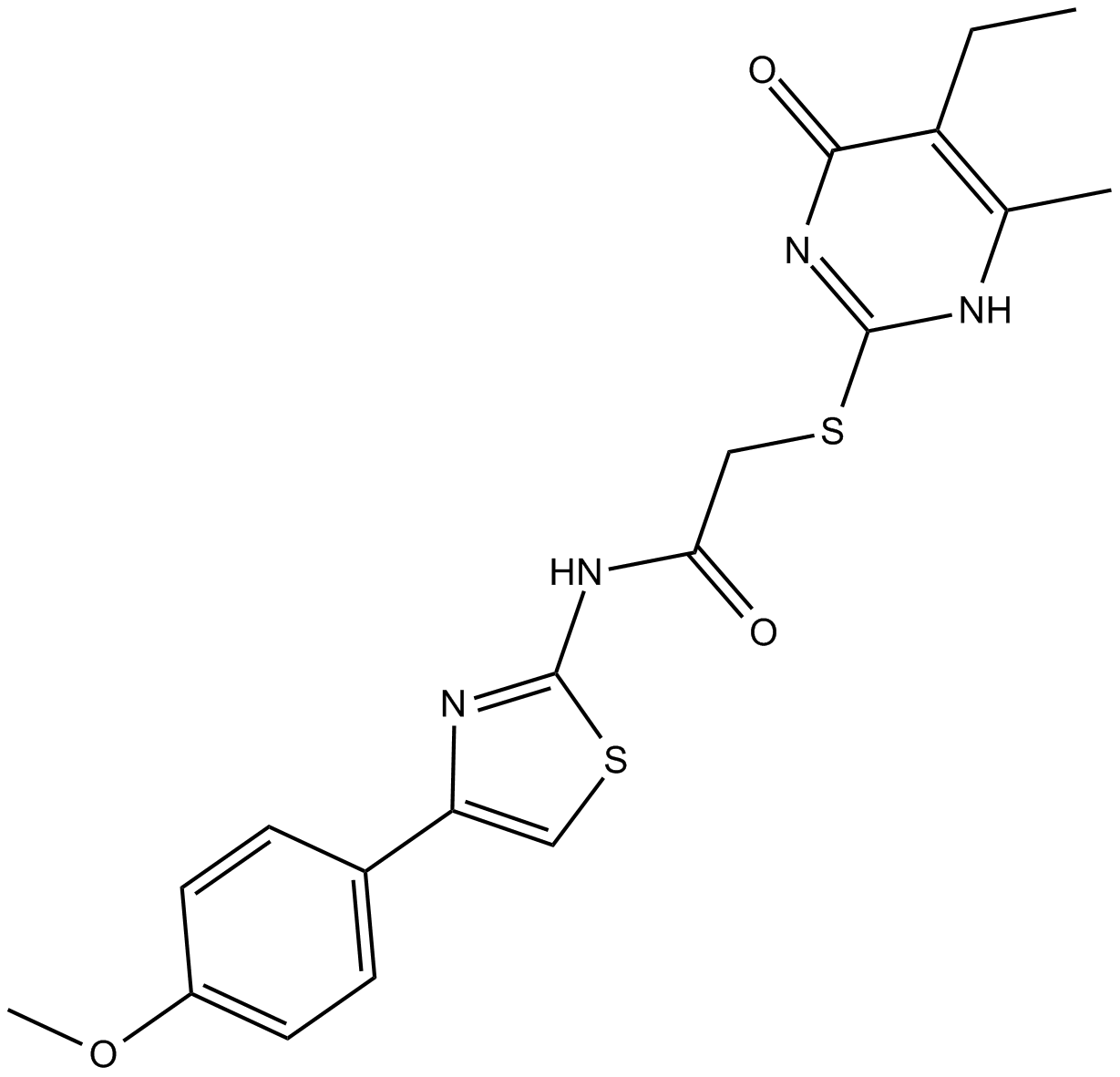T16Ainh - A01 |
| Catalog No.GC17930 |
Inhibit transient TMEM16A-mediated chloride currents
Products are for research use only. Not for human use. We do not sell to patients.

Cas No.: 552309-42-9
Sample solution is provided at 25 µL, 10mM.
Transmembrane protein 16A (TMEM16A, also known as anoctamin-1) is a calcium-activated chloride channel (CaCC) with roles in transepithelial anion transport and smooth muscle contraction. T16A(inh)-A01 is an aminophenylthiazole that inhibits transient TMEM16A-mediated chloride currents with an IC50 value of ~1 µM.[1],[2] Its inhibitory effects are independent of voltage and do not prolong the rate of TMEM16A current deactivation.[2]T16A(inh)-A01 blocks CaCC activity in vascular smooth muscle cells and relaxes mouse and human blood vessels.[3] It also inhibits the proliferation of pancreatic cancer and squamous carcinoma cells in culture.[4],[5]
Reference:
[1]. Namkung, W., Phuan, P.W., and Verkman, A.S. TMEM16A inhibitors reveal TMEM16A as a minor component of calcium-activated chloride channel conductance in airway and intestinal epithelial cells. The Journal of Biological Chemisty 286(3), 2365-2374 (2011).
[2]. Bradley, E., Fedigan, S., Webb, T., et al. Pharmacological characterization of TMEM16A currents. Channels 8(4), 308-320 (2014).
[3]. Davis, A.J., Shi, J., Pritchard, H.A.T., et al. Potent vasorelaxant activity of the TMEM16A inhibitor T16Ainh-A01. British Journal of Pharmacology 168, 773-784 (2013).
[4]. Mazzone, A., Eisenman, S.T., Strege, P.R., et al. Inhibition of cell proliferation by a selective inhibitor of the Ca2+ activated Cl- channel, Ano1. Biochemical and Biophysical Research Communications 427(2), 248-253 (2012).
[5]. Duvvuri, U., Shiwarski, D.J., Xiao, D., et al. TMEM16A induces MAPK and contributes directly to tumorigenesis and cancer progression. Cancer Research 72(13), 3270-3281 (2012).
Average Rating: 5 (Based on Reviews and 9 reference(s) in Google Scholar.)
GLPBIO products are for RESEARCH USE ONLY. Please make sure your review or question is research based.
Required fields are marked with *




















